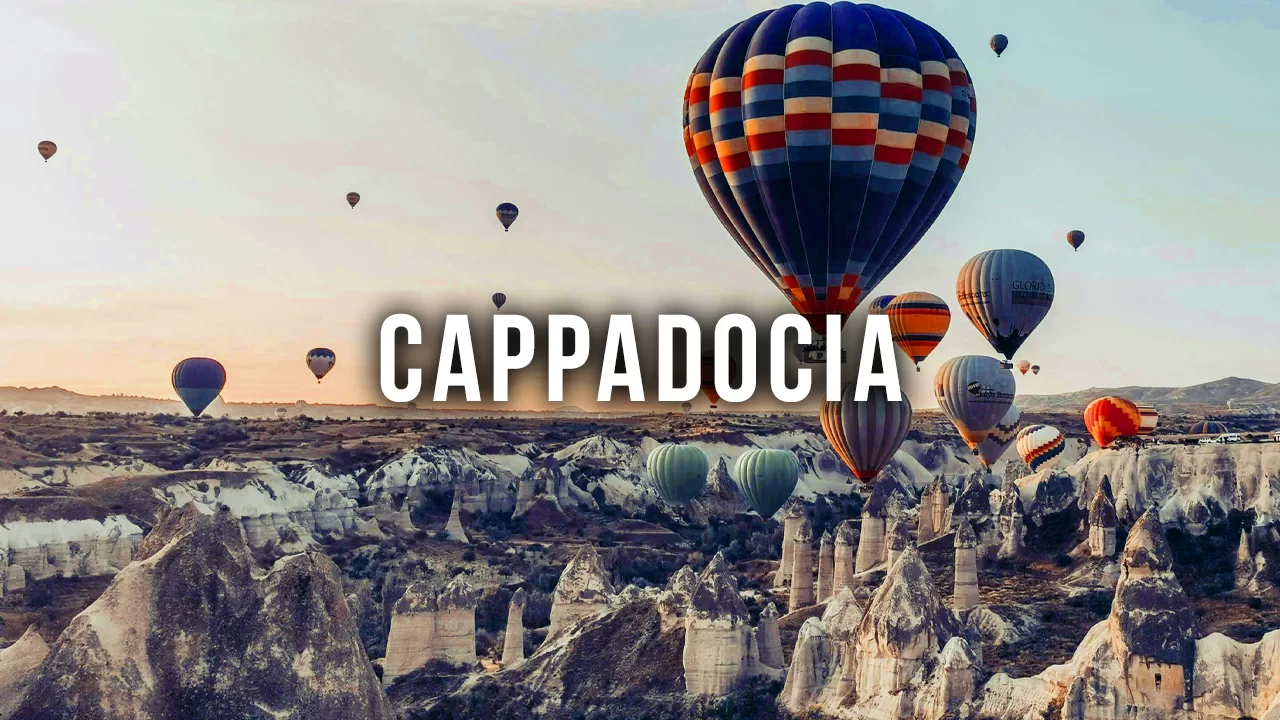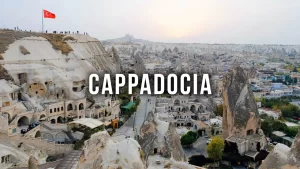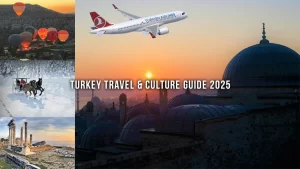Cappadocia Comprehensive Travel Guide 2025

The most comprehensive travel guide for holidays in Cappadocia
Cappadocia, which is almost flocked by visitors and travelers from around the world, is one of the most fascinating tourism centers in Turkey. Cappadocia welcomes millions of tourists every year with its natural formations, historical texture and unique landscapes.
This geography spread to Nevşehir, Aksaray, Niğde, Kayseri and Kırşehir; Cappadocia offers a unique visual feast with fairy chimneys, underground cities and hot air balloons.
If you are planning to travel to Cappadocia, here are the places you should see and a detailed travel guide!
- Göreme Open Air Museum
- Uçhisar Castle
- Who was built by Uçhisar Castle?
- In which year was the Uçhisar Castle built?
- Avanos and pottery workshops
- Derinkuyu Underground City
- Ihlara Valley
- Urgup and wine cellars
- Paşabağ (Valley of the Priests)
- Zelve Open Air Museum
- Ortahisar Castle
- Hot air balloon experience
- Cappadocia Travel Tips
Göreme Open Air Museum
The first stop of the trip to Cappadocia is the Goreme Open Air Museum on the UNESCO World Heritage List, one of the most popular stops in the region.
There are churches carved into the rock, monasteries and chapels decorated with frescoes. From the moment you step into the museum, you will feel that you are making a time journey towards the past.
The dark church and apple church in the region are among the works that should be seen
Uçhisar Castle

Uçhisar is located at the highest point in Cappadocia. Uçhisar Castle is famous for its panoramic view.
When you climb to Uçhisar Castle, you can have the opportunity to watch the Göreme Valley, Mount Erciyes and the surrounding fairy chimneys.
It is one of the most romantic points to watch the sunset.
Who was built by Uçhisar Castle?
Contrary to what is known, there is no specific person or civilization that “build” the castle. It was discovered by the Early Human Communities (Hittites Phrygians, etc.) settled in the region and was expanded by different civilizations living in the region over time (Roman, Byzantine, Seljuk).
Especially during the Byzantine Empire (4th century and later), it was an important castle-manasy in which Christians took refuge from Arab raids and became a settlement.
In which year was the Uçhisar Castle built?
It is impossible to give a definite year. Because the process of carving and expansion has been thought to have occurred in centuries and even millennium.
It is estimated that human settlement dates back to the Hittites period (1600 – 1178 BC).
It was mostly gained in the Byzantine period (between the 4th – 13th centuries) in the Byzantine period.
Avanos and pottery workshops
Avanos’s oldest known name is “Zuwinasa” or “Nenassa” from the Hittites. This name has been changed over time and has survived to the present day.
Antiquity: The Romans, who dominated the region after the Hittites, called it “Vesa”.
Evolution: The name “Vesa”, with the arrival of the Turks to Anatolia, followed the sound harmony in the language, first “Enes”, then “Uvenez”, “Evenez” and ultimately “Avanos”.
Avanos is one of the oldest and continuous settlements in Cappadocia. History has a multi -layered structure extending to the Hittites.
The Hittites Period (2000 – 1200 BC): Avanos (Nenassa) is thought to be an important religious and administrative center for the Hittites. It was located on the Hittites’ way.
Roman and Byzantine Period: When the region came under Roman domination, it took the name of Venessa. During the Byzantine period, like other parts of Cappadocia, it became an important center of Christianity. Many rock churches and monastery in the surrounding area belong to this period.
Seljuk and Ottoman Period: From the 11th century onwards, he entered Turkish rule. The Seljuks and then the Ottomans remained important as a trade and crafts center. Historical Sarıhan Caravanserai is an important work of this period.
Republican Period: Today, Cappadocia is one of the most vivid districts of tourism and crafts.
Avanos has been famous for its oldest times in history. Kızılırmak’s red and extremely efficient clay brought, this art has continued uninterrupted for thousands of years. There are numerous bowls of workshops in the district (Çarkhana) and this tradition is passed from father to son.
Here you can monitor the construction of the pottery produced by traditional methods and try it yourself.
Avanos is also famous for its vine bridge and local dishes.
Derinkuyu Underground City
Derinkuyu Underground City is one of the largest underground cities in Cappadocia. After seeing Derinkuyu underground city, you will feel as if you have rediscovered the history of the world.
This city, which was sheltered for thousands of people with its 8 -storey structure, was used for protection during the war and attack periods. You will witness that narrow tunnels, hidden passages and water wells are vital for people living here at that time.
Today, even when we go to the lower floors of the buildings, we have experienced unrest even in elevators with all kinds of security and comfort. At that time, people used narrow corridors in these underground cities by illuminating them with various lighting equipment and lived there.
Here you will have the opportunity to see that there are many underground cities, especially Derinkuyu Underground City in many parts of Cappadocia.
Ihlara Valley

Ihlara Valley, which has a 14 -kilometer hiking trail; It is the most beautiful route of Cappadocia for lovers of nature walking.
Throughout the hiking trail, you move with Melendiz Stream.
The prominent feature of the valley is that it is home to dozens of rock churches and frescoes.
Ihlara Valley is like an open -air museum. If you are considering a trip to Cappadocia, your camera should be ready to shoot at any time. Because Cappadocia is an old life that has come to the present day
Urgup and wine cellars
Ürgüp is one of the most vivid centers in Cappadocia.
Here you can visit wine cellars and taste the famous wines of Cappadocia.
Three beauties, which are the symbol of Ürgüp, are the frequented point of photography enthusiasts.
Paşabağ (Valley of the Priests)
The most famous fairy chimneys of Cappadocia are found here.
It is one of the most ideal points to take pictures thanks to its double or three -headed fairy chimneys.
It takes its name from the monks taken here in the past.
Zelve Open Air Museum
This region, which was once used as a village, is now an open -air museum.
In the valley, churches, houses and monasteries can be seen intertwined.
You feel like you’re traveling in time while wandering between the fairy chimneys.
Ortahisar Castle
It is one of the hidden beauties of Cappadocia.
Although not as popular as Uçhisar, it gives the region a different perspective.
There are boutique hotels and authentic restaurants.
Hot air balloon experience
One of the first activities that come to mind when it comes to Cappadocia is hot air balloon.
The view of Cappadocia offers an unforgettable experience with balloons floating in the sky at sunrise.
Surely reservation should be made in advance.
Cappadocia Travel Tips
The most appropriate time: Spring (April-May) and Autumn (September-October).
Transportation: Nevşehir Cappadocia Airport or Kayseri Erkilet Airport can be preferred.
Accommodation: Cave hotels offer a unique experience of the region.
Activities: ATV tours, equestrian safari and balloon tour must be experienced.




